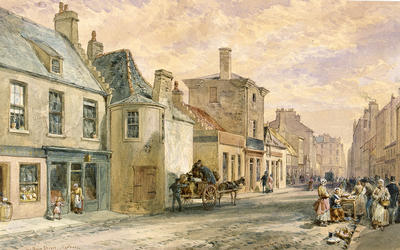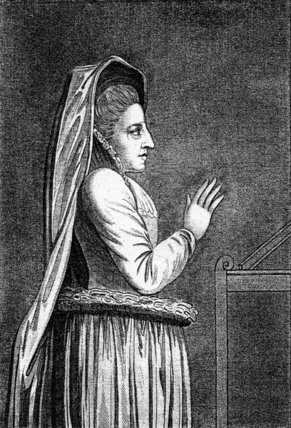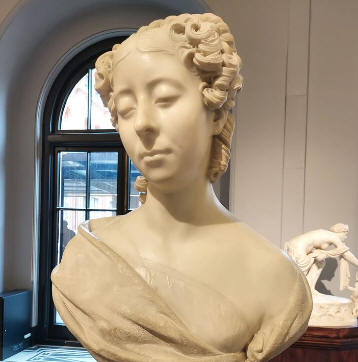This page is a stub, and requires help to complete, meanwhile caveat
lector
b. ABT 1572 'of Spott'
d. 1639 buried Chapel of Holyrood House, Edinburgh, Midlothian, SCOTLAND
Parents:
Father:
Douglas,
Malcolm (8th Laird of Mains)
Mother: Cunningham, Janet (Cuninghame)
Family:
Marriage: MAY 1611(3)
Spouse: Moray, Nicola (see below)
b. ABT 1585
d. NOV 1612
Family:
Marriage: AFT 1612 Never married.
Spouse: Whalley, Elizabeth (mistress)
Children:
(4)
Douglas, Susanna Lady
Douglas, John - who presumably died before 1639
Elizabeth Whalley was the sister of Edward Whalley, the regicide. She was
born c. 1601. Frances Cromwell, the mother of Elizabeth Whalley, was the
daughter of Henry (Williams) Cromwell (1) c1538-1604 (a Knight of the Shire
for Huntingdonshire) and Joan Warren c1540-1584 (daughter of Sir Ralph
Warren, twice Lord Mayor of London). She was an aunt of Oliver Cromwell,
Lord Protector.
There is very little hard information about the family.
Sir Robert Douglas ( Viscount Belhaven in 1633) became a widower in 1613.
Shortly afterwards about 1615, possibly, he met Elizabeth Whalley in
London and she became his mistress at the tender age of 14, not unusual
given the morals of the Jacobean court! She had a son John who was born in
c.1615 and a daughter Susanna in c.1617. It seems that she was then
married off to one William Tiffin a leading clothier and cloth merchant of
London, which would explain Edward Whalley's connections with that trade.
The marriage is recorded at St. Margaret's Westminster in 1619. I am
convinced that this is what happened as the dates are such a tight fit !
Douglas was a leading member of Charles I court and would not have
married the daughter of a merchant in dire financial straits, as Richard
Whalley was at this time. However, he would have taken advantage of the
situation for her to become his mistress, this was not uncommon. He would
also have arranged a suitable marriage to her to one of her own standing.
In other words Tiffin was in it for the money.
Apparently the Whalley family pulled some weight, the illegitimate child,
Susanna was declared legitimate by an order of King Charles I. Then
Susanna was married to Sir Robert
Douglas of Blackerstone at St. Andrews in Holborn, by none other than
the Bishop of London himself.'
Sir Robert Douglas of Spott in the county of Haddington was the
son of Malcolm Douglas of Mains in the county of Dumbarton, a descendant,
according to the Peerage lists, of Nicol Douglas of the Noble Family of
Morton.
He was Page of Honour to Henry, Prince of Wales, eldest
son of James L, afterwards his Master of the Horse, one of the Gentlemen
of the Bed-Chamber to James I., and also to Charles I., by whom he was
appointed Master of the Household, and nominated a Privy Councillor.
Sir Robert Douglas was created a Peer of Scotland by the title of
Viscount Belhaven to himself and the heirs-male of his body on the 24th of
June 1633.
Bishop Burnet relates an anecdote of this first and only
Viscount Belhaven on the authority of Sir Archibald Primrose, father of
the first Earl of Rosebery. It is connected with Charles I.'s revocation
of the teinds (tithes) in Scotland in 1629, and illustrates the dangerous,
lawless, and violent conduct of the Scottish Nobility in reference to that
and other affairs. Sir Robert Douglas of Spott attended the conference
held in Edinburgh to adjust the matter, the arrangement of which had been
deputed by Charles I. to the Earl of Nithsdale. At a secret meeting of the
Barons and the leaders of the Presbyterian party, it was settled that when
the Earl appeared with his commission for the resumption of the Church
lands and tithes, his " brains were to be knocked out after the good old
Scottish manner" if he did not retire, and his supporters were to be
murdered. One of those adherents was the first Viscount Ayr, created Earl
of Dumfries in 1633. The future Viscount Belhaven, then blind, was as
ferocious against the resumption of the Church lands as any of the others,
and attended the conference. He resolved to sit close to one of the Earl
of Nithsdale's party, of whom, notwithstanding his blindness, he said that
he would make sure. He was placed beside Viscount Ayr, whom he firmly
grasped by the hand during the meeting. When the Viscount asked him the
meaning of this extraordinary civility, Belhaven replied that his Want of
sight had made him apprehensive of falling from his seat, and he was
obliged to hold fast to any who happened to be next him. His other hand,
however, grasped a dagger, with which he intended to stab the Viscount if
any discussion occurred.
The subsequent Lords or Barons Belhaven
in the Peerage of Scotland—a branch of the Noble family of Hamilton—had no
relationship to this Viscount Belhaven, who married Nicolas, eldest
daughter of Robert Moray of Abercairney. One child, who died an infant,
was the offspring of this marriage, and the lady died in 1612, having
never recovered the birth of the infant. She was interred in the Savoy
Chapel in the Strand, Westminster, where a monument, surmounted by a
recumbent figure of her husband, was erected to her memory, with a long
Latin inscription, which is inserted by Stow in his " Survey of the Cities
of London and Westminster" (vol. ii. p. 108).
He died at Edinburgh
on the 14th of January 1639, in the sixty-sixth year of his age, and the
monument over his remains in the Chapel-Royal was erected by his nephews
and heirs, Sir Archibald and Sir Robert Douglas. Engravings of Viscount
Belhaven and his Lady may be seen in Pinkerton's " Iconographia Scotica."
Robert Douglas, Viscount Belhaven (1573/4–1639), politician, was the third son of
Malcolm Douglas (d. 1585)
of Main. 1585)
of Mains, Dunbartonshire, and his wife, Janet, daughter of John
Cunninghame of Drumquassle. His father was executed at Edinburgh Cross on
9 February 1585 for his alleged complicity in the plot of the banished
lords to assassinate James VI. Having been page of honour to Prince Henry,
he later became his master of horse. He was knighted by the king on 7
February 1609. On 12 January 1611 he married at St Mary Woolnoth, London,
Nicola, the eldest daughter of Robert Moray of Abercairny. She died in
November 1612(3) giving birth to their only child, who did not survive.
Following the death of Prince Henry the same month, Sir Robert was
appointed one of the king's gentlemen of the bedchamber, and his wealth
and standing increased. He had charters of an annual rent out of the
lordship of Torthorwald (3 June 1613 and 11 September 1617) and Carlyle (3
June 1613), as well as the lands of Spott and the office of chamberlain
(1622) and baillie of the lordship of Dunbar, which were united into the
free barony of Spott (24 April 1624). In 1631 he also acquired a charter
of annual rent of lands in the Dunbar lordship. Douglas continued as a
gentleman of the bedchamber under Charles I and was appointed master of
the household. However, Sir Archibald Primrose related to Gilbert Burnet a
story which, if true, indicated that Douglas might be ruthless in opposing
royal policy. When in the third year of Charles's reign Robert Maxwell,
earl of Nithsdale, arrived in Scotland with a commission for the
resumption of church lands and tithes, the interested parties agreed in
Edinburgh, ‘if no other argument did prevail to make the earl of
Nithisdale desist, they would fall upon him and all his party in the old
Scotish manner, and knock them on the head’. Douglas, who was blind, asked
to be placed next to one of the commissioners to ‘make sure of’ him.
Sitting with the earl of Dumfries, ‘he was all the while holding him
fast’, an action he put down, when challenged, to his blindness, but ‘he
had all the while a poinard in his other hand, with which he had certainly
stabbed Dumfrize, if any disorder had happened’ (Bishop
Burnet's History, 1.36–7). Nithsdale and his party were duly
intimidated, and temporarily abandoned their mission.
In the long
term Douglas's career was not adversely affected. On 5 July 1631 he was
admitted to the Scottish privy council. He was one of the many aspirants
who were raised to the Scottish peerage during the period of the king's
coronation visit to Scotland, being on 24 June 1633 created Viscount
Belhaven in the county of Haddington. That he was a favourite of Charles I
is apparent from the report of Sir Robert Pye in 1637, in which it is
stated that Belhaven had:
| received out of the exchequer since his majesty's accession, besides
his pension of 666l. 13s. 14d. per annum and his
fee for keeping his majesty's house and park at Richmond, 7000l.
by virtue of two privy seals, one, dated 5 Aug 1625, being for 2000l.
for acceptable services done to his majesty, and the other, dated 25
June 1630, for 5000l. in consideration of long and acceptable
services. alic">CSP dom., 1637, 130) |
On 22 September 1638On 22 September 1638 Belhaven signed the ‘king's covenant’, a royally
approved alternative to the national covenant, in the presence of the
Scottish privy council, and was appointed to superintend its subscription
in the sheriffdom of Renfrew. Belhaven died at Edinburgh on 12 January
1639 and was buried in the abbey church of Holyrood, where a monument to
him was erected by his nephews, Sir Archibald and Sir Robert Douglas.
Since Belhaven was childless, the viscountcy became extinct.

Copyright: Glasgow City Council, Glasgow Museums |
Main Street, Gorbals by William Simpson
(1823-1899).
This watercolour provides a view
of Main Street (later Gorbals Street) looking south.
Sir George Elphinstone became MP for Glasgow in 1583
and Provost in 1605. He acquired land in the Gorbals
in 1601 and built a mansion and chapel (left). He
died in 1634 and his estate was sold to pay his
debts. Robert Douglas, Vicount Belhaven, purchased
the barony and added the square tower (middle
distance) to the old baronial hall. Only the bases
remain here, of the square turrets which once
adorned each corner. The round tower in the street
has also been reduced in height. By the 1840s the
chapel had been converted into a pub, identifiable
by the gilt board sign hanging outside. The
Citizens' Theatre now occupies the site of the house
and church. |
|

|
Lady Douglas, from her Monument in the Savoy Chapel
Nicolaa
Murray, afterwards wife of Sir Robert Douglas, was daughter of Sir
Robert Murray of Abercairny. She died in November 1612 (3), as we
learn from a long inscription, copied in Strype's edition of
Stow's Survey of London. But the following curious part,
apparently on a separate tablet, is not now legible.
Ecce
pudicitia et pietas,
Coeli utraque proles,
Accingunt dextra
haec,
Haec tibi leva latus.
Juro, salo, coluere polo†
Rapuere, nec usquam
Te, neque jam tumulum
Destituere tuum.
Da. Humius Theag. non delendae amicitiae sempiter num monumentum.
(2
) |
Children of Susanna and Sir Robert of Blackerstone:
-
John Douglas of
Blythswood, arr Maryland 1655 (b c1636, d 1678, to America in 1654,
Colonel) m. (17.08.1663) Sarah Bonner (Mrs. Bowles) had
issue
-
Susannah Douglas
(b 07.02.1647) m. (1672) _ Johnston of Hilton and Hutton
other issue:
-
Alexander, Robert, James, Elizabeth, Charles (b c22.02.1661
Notes:
1. Henry (Willi1. Henry (Williams) Cromwell's great-grand-daughter,
Robina Lockhart, married Archibald
Douglas, 1st Earl of Forfar
2. Here modesty and loyalty
Heaven both
offspring;
Everyone prepared let this right hand,
This is your left
This is your left
hand side.
Juro, surf, occupy pole †
Snatched me away, nor do they
evers already a heap,
Your tasks.
Give. Hume
THEAGES. must not be destroyed, Shall I of friendship shall be an
everlasting tomb.
(Translation by Google)
3. November 1612 is a much quoted date of
death, but there is some doubt about this. In a long letter to
Andrew of July 1612 (no actual date stated, alas), Mr James Melville
writes of his merely getting by day by day, reduced to real poverty in
his exile in Berwick, now that Nicolas Murray's death has dried up the
torrent of liberality and Christian charity, as nothing has come from
the court since her sad and lugubrious departure. She apparently
died 18 months after her marriage, so a May 1311 wedding seems unlikely.
4. Stuart Brown also writes '...daughter
Susanna who, incidentally, married her cousin , Robert Douglas of Blackerstone.'
William Hill writes: 'daughter was named Susanna and she married Sir
Robert Douglas of Blackerstone and Blythswood. He also states they
had a son, Col John Douglas.
Lady Hamilton of Belhaven and Stenton
c1790 - 1873
nee
Hamilton Campbell
Bust is in the Victoria and Albert Museum,
London
Included here because I like it!
Hamilton Campbell (about 1790-1873) became Lady Belhaven and Stenton through her marriage in 1815 to Sir Robert Montgomery Hamilton, 8th Lord Belhaven and Stenton. A marble bust of her husband is also in the Museum's collection.
She was the daughter of Walter Campbell, 9th of Skipness and 3rd of Shawfield and Mary Nisbet.
|
 |
|


